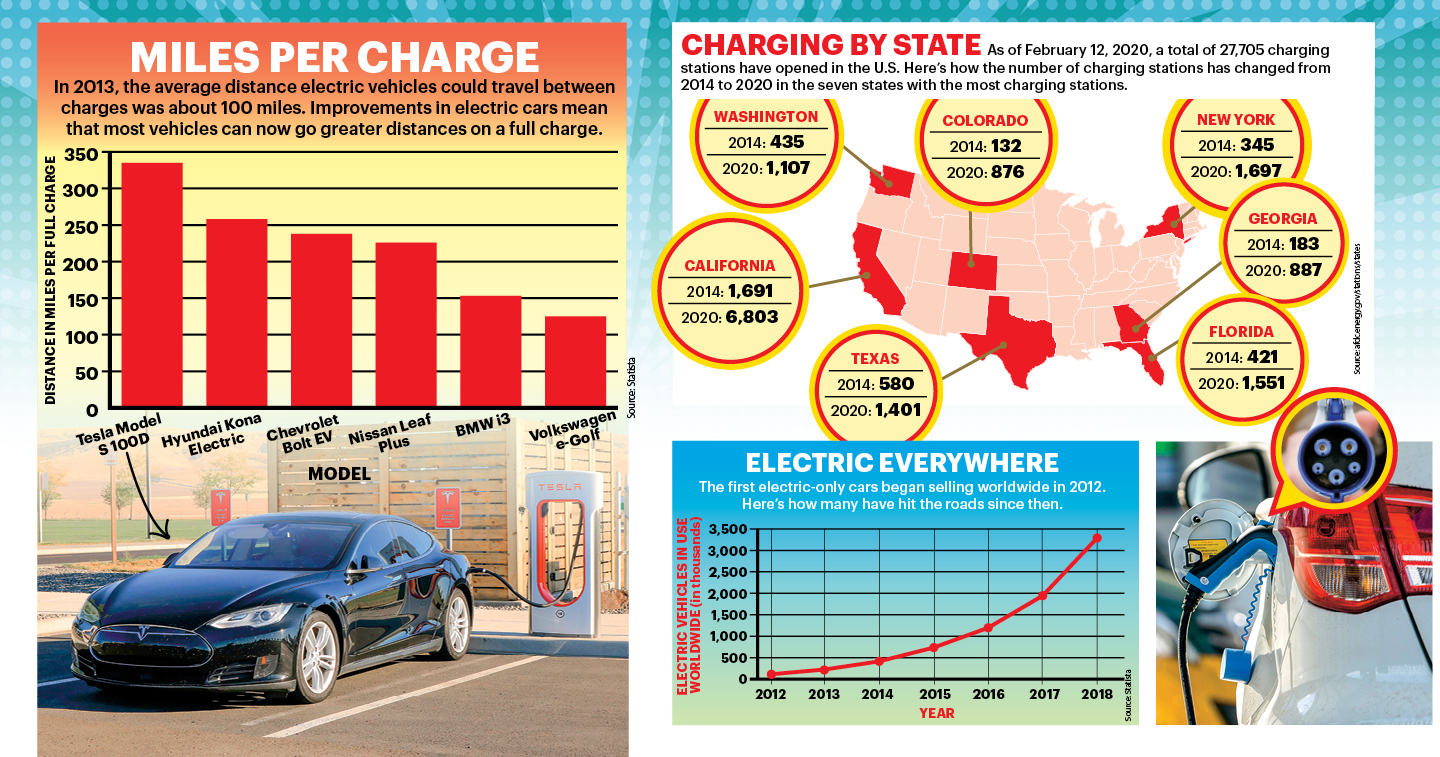From cars to buses to trucks, vehicles are becoming electric. Instead of burning gasoline, they run on batteries. To fuel up an electric car, you plug it into a special electrical outlet. Mass production of electric cars began in 2010. Since then, new models have taken the U.S. by storm—and are offering a more environmentally friendly alternative to gas-burning cars.
Despite their growing popularity, electric cars are still a relatively small portion of the vehicles you’ll see on U.S. roads. One reason is that they’re more expensive than gas-burning cars. But this is beginning to change. “The cost of the batteries going into electric vehicles has fallen drastically, by about 80 percent,” says Christopher Knittel, an economist at the Massachusetts Institute of Technology. Falling battery costs means lower price tags on new electric cars.
More electric cars on the road is good news for the environment. But exactly how good depends on where the electricity from their home outlet comes from: About 63 percent of the electricity in the U.S. is generated by burning fossil fuels. If electric cars are powered by this energy, they’re still contributing to fossil fuel emissions. But some states, like California and Massachusetts, get more of their electricity from renewable sources, such as wind and solar.
Still, gas-powered cars are one of the major sources of greenhouse gases, so, according to Knittel, “every year that we miss moving toward a more sustainable car market is another year wasted for the climate.”


